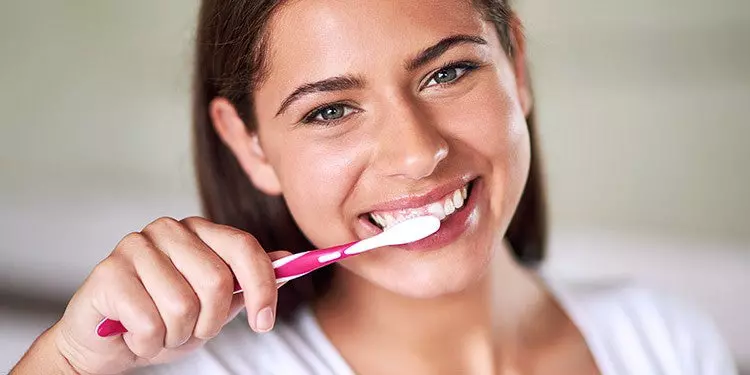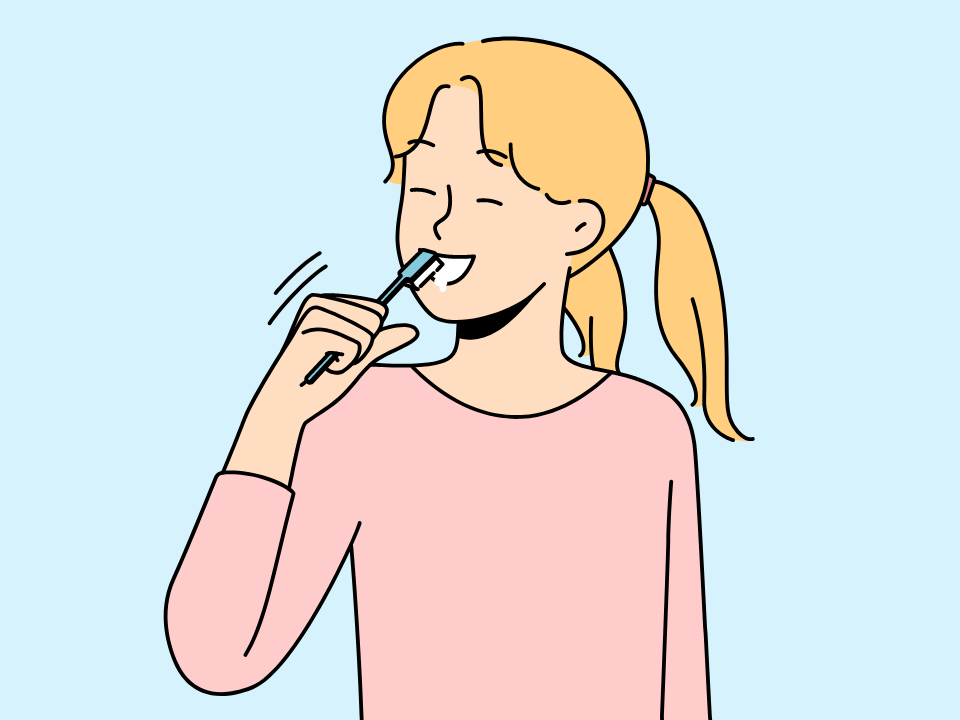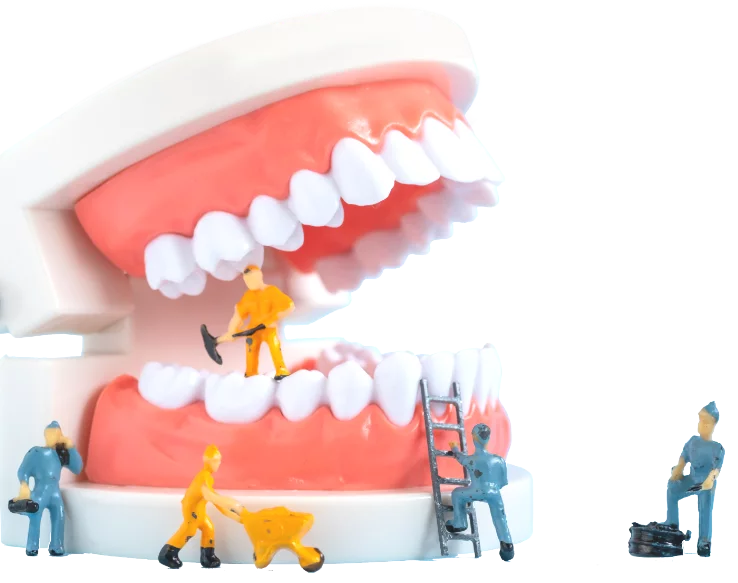What Is Plaque?
Plaque is a colorless, sticky layer of bacteria that constantly collects on teeth. Bacteria in plaque use sugar found in foods to produce acids. Those acids weaken and destroy tooth enamel. This increases your risk for cavities and gingivitis – the first stage of gum disease.
What Causes Plaque?
Foods high in sugar or starch, such as soda, juice, bread, and pasta, are the catalysts for plaque formation—bacteria in the mouth mix with these to form acids that break down carbohydrates. The combination of bacteria, acids, and carbohydrates creates the clear, sticky biofilm known as plaque.
Tooth Plaque vs. Tartar
Dental plaque and tartar are related. Plaque is the initial biofilm that forms on your teeth due to eating too many sugary foods and not practicing the proper oral care to remove it. Plaque is constantly forming, so taking care of your teeth to ensure you’re removing plaque is the best way to minimize its harmful effects.
The two substances each have a different feel. Plaque tends to give off a fuzzy feeling when you rub your tongue along your teeth. Tartar has a rougher feel. It will also have a yellow or brown tinge.
Does Plaque Cause Bad Breath?
How to Remove Plaque from Teeth?
Regular brushing and flossing are two of the main ways to remove plaque on teeth.
How to Remove Tartar from Teeth
There are three factors that put you at a higher risk for developing tartar.
- Neglecting to remove plaque by brushing and flossing your teeth on a regular basis
- Not scheduling regular cleanings with your dentist
- Crooked teeth that complicate your ability to clean between them
- Tender, painful gums that bleed when you brush and floss
- Hard, rough patches on a tooth's surface
- Colored spots that have developed along the gum line or in between teeth
Scaling and Root Planing
Scaling and root planing is a two-step process that cleans below the gumline in an effort to treat gum disease.
Scaling is when a dentist or hygienist removes plaque and tartar from a tooth's surface and below the gumline. This can be done with a manual instrument, an ultrasonic device, or both. The ultrasonic device uses sonic vibrations to the plaque and tartar. A manual device might be necessary to chip away sections of tartar that have hardened too much to be removed by the sonic vibrations.
Root planing is the second step of the process. Your dentist performs a more precise scaling along a tooth's root surface to smooth out rough spots. Bacteria, plaque, and tartar won't be able to form along a tooth's root once the surface has been smoothed over. Root planing will also decrease swollen gum tissue. The gums can then reattach themselves more firmly to the teeth.
A scaling and root planing procedure may require more than one office visit to complete. You also might need to be administered a local anesthetic prior to the procedure.
Post Procedure
How to Prevent Plaque Build-Up
Plaque collects on your teeth daily no matter how diligently you’re dedicated to good oral care. Besides brushing and flossing – which are your best options to remove plaque each day - here are some tips on how to prevent plaque from building up on your teeth.
- Eat Healthy Foods – Opt for nutritious foods instead of those high in sugar and starch. Fruits and vegetables, cheese, and plain yogurt are good options to include with meals and snacks.
- Chew Sugarless Gum – Chew sugar-free gum after a meal or snack if you’re unable to brush your teeth. Look for a gum with the American Dental Association (ADA) seal of approval on the package.
- Use Mouthwash – Rinsing with mouth wash is one way to complement brushing and flossing. Choose a rinse that is antiseptic – whether it’s over-the-counter or prescription-strength prescribed by your dentist.
- Schedule Dental Visits – Make sure to see your dentist twice a year for regular cleanings. Your dentist will also be able to check for other oral issues before they become a problem.
Find a Dentist Near You to Treat Tooth Plaque
Consult your dentist to discuss the best methods to prevent or remove tooth plaque. Or you're asking where can I find a dentist near me, visit The Smile Generation to find a dentist near you for your tooth plaque prevention or removal needs. You can read patient reviews, peruse staff bios, and schedule an appointment online with a click of your mouse.
Find your trusted, local dentist today!
Sources
- Colgate. (2023). Plaque: What is it and how do we get rid of it? Retrieved October 3, 2024, from https://www.colgate.com/en-us/oral-health/plaque-and-tartar/plaque-what-is-it-and-how-do-we-get-rid-of-it
- Cleveland Clinic. (n.d.). Plaque. Retrieved October 3, 2024, from https://my.clevelandclinic.org/health/diseases/10953-plaque
- American Dental Association. (n.d.). Plaque. Retrieved October 3, 2024, from https://www.mouthhealthy.org/all-topics-a-z/plaque/
- Archibald, J. (2020, November 04). Plaque vs. tartar: What’s the difference? Medical News Today. Retrieved October 3, 2024, from https://www.medicalnewstoday.com/articles/plaque-vs-tartar
- Rizzo, L. (2023, February 22). How to remove plaque. Healthline. Retrieved October 3, 2024, from https://www.healthline.com/health/how-to-remove-plaque
- American Dental Association. (n.d.). Scaling and root planing. Retrieved October 3, 2024, from https://www.mouthhealthy.org/all-topics-a-z/scaling-and-root-planing/
- Colgate. (2023, August 30). What dentists do when root planing and scaling teeth. Retrieved October 3, 2024, from https://www.colgate.com/en-us/oral-health/gum-disease/what-dentists-do-when-root-planing-and-scaling-teeth
- Rizzo, L. (2023, February 22). Plaque vs. tartar: What’s the difference? Healthline. Retrieved October 3, 2024, from https://www.healthline.com/health/plaque-vs-tartar#differences
Smile Generation blog articles are reviewed by a licensed dental professional before publishing. However, we present this information for educational purposes only with the intent to promote readers’ understanding of oral health and oral healthcare treatment options and technology. We do not intend for our blog content to substitute for professional dental care and clinical advice, diagnosis, or treatment planning provided by a licensed dental professional. Smile Generation always recommends seeking the advice of a dentist, physician, or other licensed healthcare professional for a dental or medical condition or treatment.








